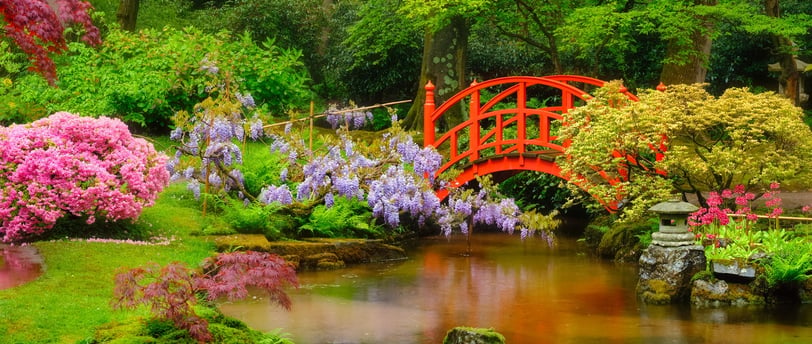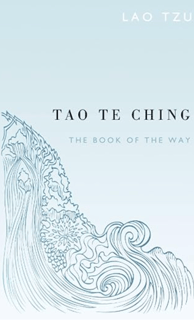An Overview of the Tao Te Ching: History, Themes, and Influence
ARTICLE
ChatGPT-3.5
3/22/20246 min read


The Tao Te Ching stands as one of the most influential texts in Chinese philosophy, revered for its profound insights into the nature of existence, governance, and human behavior. Attributed to the legendary sage Laozi, its origins and authorship are shrouded in mystery, contributing to its enigmatic allure. In this overview, we will delve into the historical and cultural context of the Tao Te Ching, explore its key themes, and examine its enduring influence on philosophy.
Historical and Cultural Context
The Tao Te Ching emerged during a period of intellectual ferment in ancient China known as the Warring States period (475–221 BCE). This era was marked by political instability, social upheaval, and philosophical inquiry as various states vied for supremacy. Against this backdrop, profound questions about the nature of existence, governance, and ethics arose, prompting scholars and sages to seek wisdom and guidance.
Traditionally attributed to Laozi, a sage and philosopher, the exact identity of the author remains a subject of debate among scholars. Some suggest that Laozi was a historical figure who lived during the 6th century BCE, while others view him as a legendary figure whose existence is more symbolic than historical. Regardless of its authorship, the Tao Te Ching crystallizes the philosophical insights of its time and continues to resonate with readers across cultures and epochs.
Key Themes of the Tao Te Ching
Six fundamental concepts can be found in the text.
The Tao (The Way). Central to the Tao Te Ching is the notion of the Tao, often translated as “The Way.” The Tao represents the fundamental, ineffable principle that underlies all existence. It is the source of the universe, the rhythm of nature, and the ultimate reality beyond human comprehension. Laozi describes the Tao as both transcendent and immanent, omnipresent yet elusive, emphasizing its paradoxical nature.
Wu-Wei (Non-Action). Another key theme is wu-wei, often translated as “non-action” or “effortless action.” Contrary to the Western notion of passivity, wu-wei does not advocate inaction, but rather, aligning oneself with the natural flow of the Tao. It entails acting spontaneously, without contrivance or coercion, and allowing events to unfold organically. By relinquishing the ego and surrendering to the Tao, one achieves harmony with the universe.
Ziran (Naturalness). Closely related to wu-wei is the concept of ziran, or naturalness. Ziran emphasizes spontaneity, simplicity, and authenticity in one’s actions. It encourages individuals to embrace their innate nature and cultivate an intuitive sense of rightness, rather than conforming to societal norms or artificial conventions. By embodying the natural way, one attains inner peace and fulfillment.
The Paradox of Power. The Tao Te Ching offers a nuanced perspective on power and governance, challenging conventional notions of authority and control. Laozi advocates for a ruler who governs with humility and restraint, embodying the principle of wu-wei. Instead of imposing rigid laws and regulations, the sage ruler leads by example, fostering harmony and prosperity through non-interference. This paradoxical approach to power underscores the Taoist emphasis on spontaneity and adaptability.
Embracing Simplicity. Simplicity is celebrated as a virtue in the Tao Te Ching, reflecting the Taoist reverence for the unadorned and uncomplicated. Laozi extols the value of simplicity in thought, action, and lifestyle, urging individuals to shed excess baggage and return to the essence of being. By letting go of worldly desires and attachments, one achieves clarity of mind and inner tranquility.
The Unity of Opposites. The Tao Te Ching explores the interplay of yin and yang, the complementary forces that shape the universe. Yin represents darkness, receptivity, and the feminine principle, while yang symbolizes light, activity, and the masculine principle. Rather than viewing these opposites as conflicting or dualistic, Taoism emphasizes their inherent unity and interdependence. Just as day gives way to night and summer yields to winter, the interplay of yin and yang sustains the dynamic equilibrium of existence.
Influences on Philosophy
The Tao Te Ching has exerted a profound influence on philosophy, both within China and beyond. Its timeless wisdom has inspired countless thinkers, poets, and spiritual seekers throughout history.
Daoist Philosophy. The Tao Te Ching laid the groundwork for Daoist philosophy, which emerged as a distinct school of thought during the Han dynasty (206 BCE–220 CE). Daoism elaborated on the teachings of Laozi, emphasizing the cultivation of inner virtue, harmony with nature, and the pursuit of immortality.
Zen Buddhism. The Tao Te Ching also left an indelible mark on Zen Buddhism, which originated in China before spreading to Japan and other East Asian countries. Zen shares many affinities with Taoism, particularly in its emphasis on meditation, intuition, and direct experience of reality.
Western Philosophy. In the West, the Tao Te Ching has captivated the minds of philosophers, poets, and scholars seeking alternative perspectives on reality and existence. From the transcendentalism of Ralph Waldo Emerson to the existentialism of Martin Heidegger, Western thinkers have drawn inspiration from Taoist themes such as simplicity, spontaneity, and the unity of opposites.
New Age Spirituality. In the modern era, the Tao Te Ching has found a receptive audience among practitioners of New Age spirituality, who are drawn to its mystical insights and holistic worldview. Its teachings on living in harmony with nature, embracing simplicity, and cultivating inner peace resonate with those seeking alternative paths to personal growth and enlightenment. The Tao Te Ching continues to inspire spiritual seekers around the world, transcending cultural and religious boundaries.
Famous Passages and Verses
The Tao Te Ching is replete with timeless wisdom encapsulated in its concise and poetic verses. While it is challenging to select a few passages from such a rich and profound text, here are portions from some of the most famous and influential sections.
Section 1: What Is the Tao?
The Tao that can be understood
is not the eternal, cosmic Tao,
just as an idea that can be expressed in words
is not the infinite idea.
And yet this ineffable Tao
is the source of all spirit and matter;
expressing itself,
it is the mother of all created things.
Section 2: Opposites
Existence and nonexistence are incompatible.
The difficult and the easy are mutually opposed.
The long and the short, the high and the low,
the loud and the soft, the before and the after—
all are opposites.
Each reveals the other.
Section 14: The Mysterious Tao
Because of its diverse qualities it cannot be summarized,
yet it comprises an essential unity.
On the surface it appears incomprehensible,
but in the depths it reveals itself.
Section 19: False and True Religion
Abandon cleverness and greed;
then thieves and robbers will disappear.
Here are the four fundamentals of true spirituality:
recognize simplicity,
cherish purity,
reduce your possessions,
diminish your desires.
Section 28: Know Yourself
Those who know both their masculine side and their feminine
become fruitful like the valleys of earth.
Section 32: Where to Stop
The eternal Tao is unnamable.
In its simplicity it appears insignificant;
but the whole world cannot contain it.
Section 35: Seek the Tao
When looked at, it is not much to see;
when listened for, it can scarcely be heard;
but when put into practice, it is inexhaustible.
Section 42: Yin and Yang
There are some things which it is a gain to lose,
and a loss to gain.
Section 47: Explore Within
The wise explore without traveling,
discern without seeing,
finish without striving,
and arrive at their destination
without leaving home.
Section 54: A Model for Others
A tree that is well-planted is not easily uprooted.
A treasure that is well-guarded is not easily taken away.
If you pass on the Tao to your children,
your family's virtue will endure.
Section 59: Life Without Limits
In ruling and in life,
nothing surpasses moderation.
One must form the habit early.
Acquiring moderation results in accumulating virtue.
By accumulating virtue, nothing is impossible.
Section 62: The Saving Tao
The Tao is the sanctuary of all—
it is the good person's treasure,
and the bad person's last resort.
Section 67: Compassion
The Tao has three treasures
which the wise guard and cherish:
The first is compassion,
the second is economy,
the third is humility.
If you are compassionate, you can be truly courageous;
if you are economical, you can be truly generous;
if you are humble, you can be truly helpful.
Section 81: True Words
True words are often unpleasant;
pleasant words are often untrue.
Those who know the truth do not argue about it;
those who argue about it do not know the truth.
Lasting Sageness
These passages capture the essence of the Tao Te Ching, offering profound insights into the nature of reality, human conduct, and the art of governance. Through its timeless wisdom, the Tao Te Ching continues to inspire and enlighten readers across cultures and generations, inviting us to embrace the way of the Tao in our journey through life.
—This article was partially generated by ChatGPT (powered by OpenAI’s language model, GPT-3.5; https://openai.com). The editing was performed by Aaron Larson.
Purchase the book now on Amazon
As an Amazon Associate, I earn from qualifying purchases. This does not affect your cost. The commission comes out of Amazon's profits. Thank you for your support.


